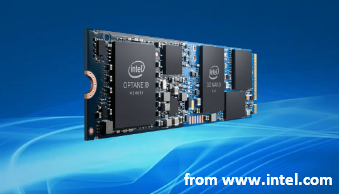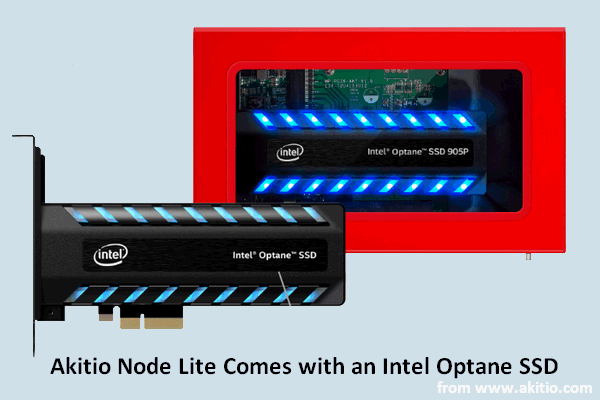The new Intel Optane Memory H10 is a fast M.2 drive that is able to help accelerate responsiveness of your computer, so as to access documents, photos, images, videos and other types of files more quickly than before. The Intel Optane storage is actually ahead of its time.
Intel Optane Memory H10 Makes Its Debut
The Intel Optane 3D XPoint memory brings us with an incredibly fast experience; yet, its storage capacity is far too limited. At the CES 2019, Intel has released its latest Optane Memory H10 to break the capacity limit. The announcement of the new memory product – M.2 drive – has been welcomed by lots of people.
The Samsung SSD 970 Product Is The Fastest M.2 SSD.
Apart from launching Intel Optane Memory H10, Intel has talked about a lot of other things at the CES 2019:
- New initiatives
- New projects
- New products
- …
Among them, a significant number of announcements that are closely related to the 10nm technology are involved.

Controller
This M.2 drive is actually formed by putting a 32GB Optane memory caching drive and an Intel 660p QLC SSD crammed onto the same board. Therefore, there exist 2 controllers:
- One custom Intel controller designed for the Optane memory
- One separate SMI controller designed for the QLC flash memory
Each controller is equipped with its unique PCIe 3.0 x 2 pathways for getting into the M.2 socket properly; they are bound together by the Rapid Storage Technology (RST) of Intel. Therefore, the speed of the M.2 drive is limited to that of a single PCIe 3.0 x 2 connection. As a result, the performance for large transfers will be constrained; you have to keep the speed and latency of Optane during random workloads.
Capacity Configurations
Actually, there are three configurations for the new Optane Memory H10, released by Intel.
- 16GB Optane and 256GB NAND
- 32GB Optane and 512GB NAND
- 32GB Optane and 1TB NAND

Till now, the most SSD caches people can see are used for spinning disks. It would be a good idea to adopt the high-speed Optane cache to buffer QLC NAND. By putting the solution on the same M.2 silicon, Intel is able to make the drives into even the thinnest thin-and-light systems. Meanwhile, the density improvements of QLC NAND could contribute to the decrease of the overall cost.
How the Storage Capacity Has Been Improved
The onboard Optane cache and NAND flash are designed on the same M.2 drive in the latest Optane Memory H10 of Intel. After pairing the speedy 3D XPoint memory with a dollop of QLC flash, you get fast speed, as well as large capacity. Besides, it’s possible that the Optane-powered SSDs with a large capacity of up to 1TB will come soon.
In general, the SSDs equipped with a higher-density NAND like QLC or TLC will sacrifice some speed; to compensate this, a small cache of very fast NAND will also be included.
- In some systems, the cache will be deployed in a static configuration.
- In other systems, the cache pool will be expand or contracted according to the actual free drive space available.
The ultimate goal is: make the best use of the free capacity in low-density configurations so as to optimize the overall product performance and responsiveness.
As for the operating system, the Optane memory is transparent. Therefore, only the QLC flash portion of the SSD will be exposed to you. That explains why the Intel Optane Memory H10 model equipped with 1TB of QLC flash & 32GB of Optane memory only shows as a 1TB drive.
This new M.2 drive will definitely open up new opportunities for notebook users as well as Intel. Besides, in the second quarter of 2019, it will make its debut in OEM systems from:
- HP
- Dell
- Acer
- Asus
- Lenovo
- …
Please note: it is said that the Intel Optane Memory H10 SSDs will be applied to OEM laptops in the second quarter of 2019. Then, it will show up in the OEM desktops. What’s more, it is going to be available for the do-it-yourself market in years to come.

User Comments :